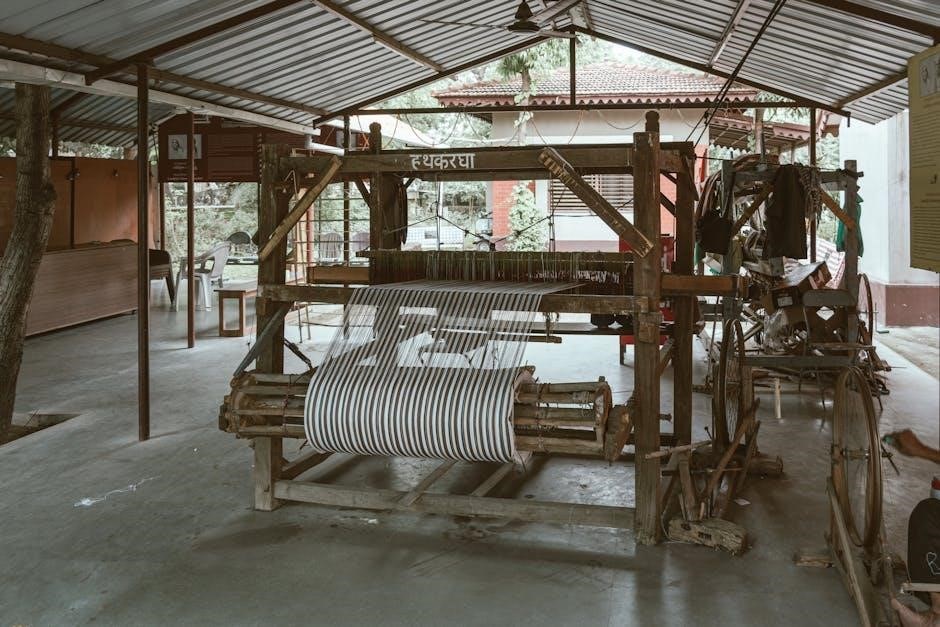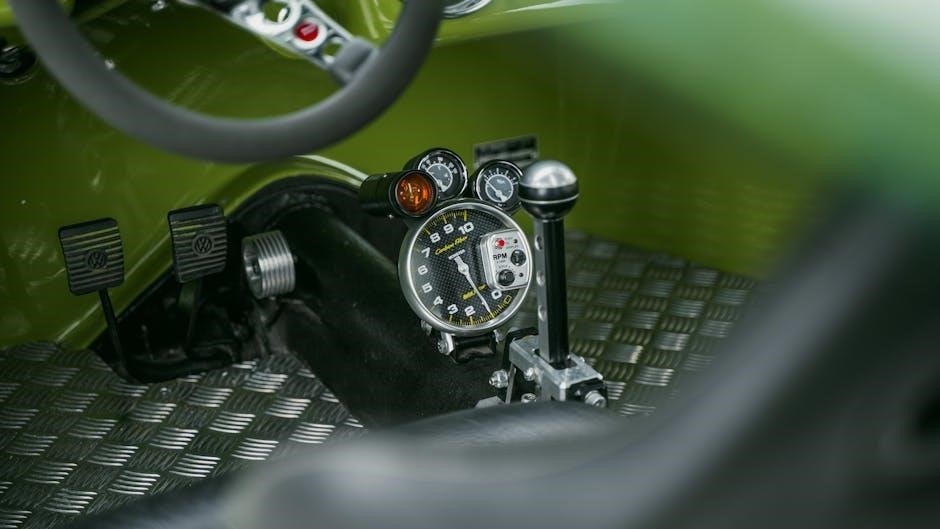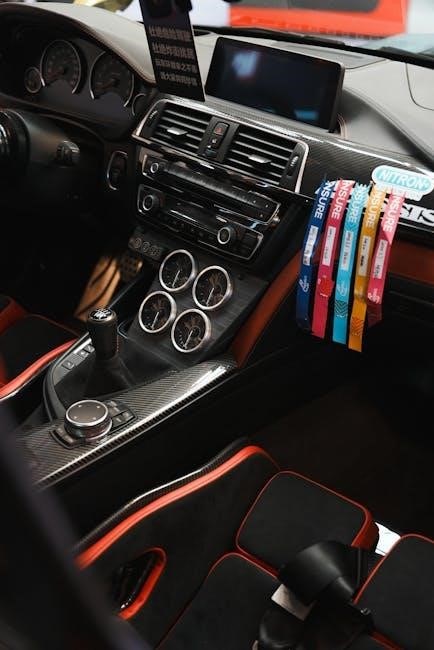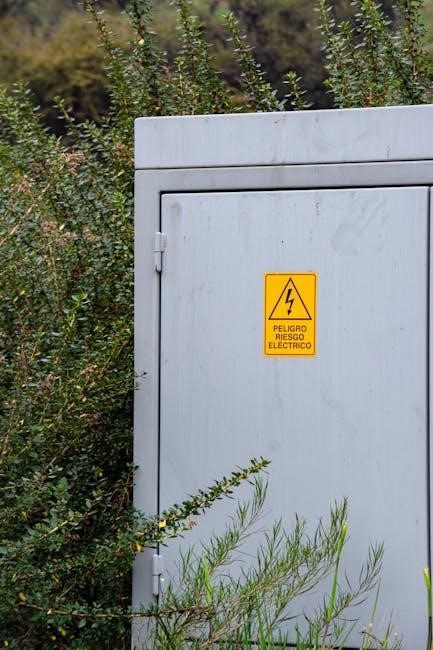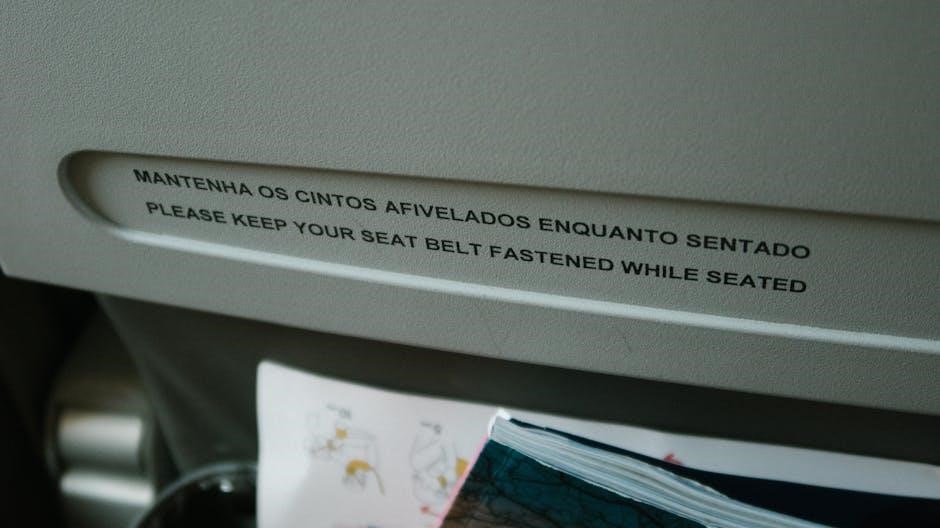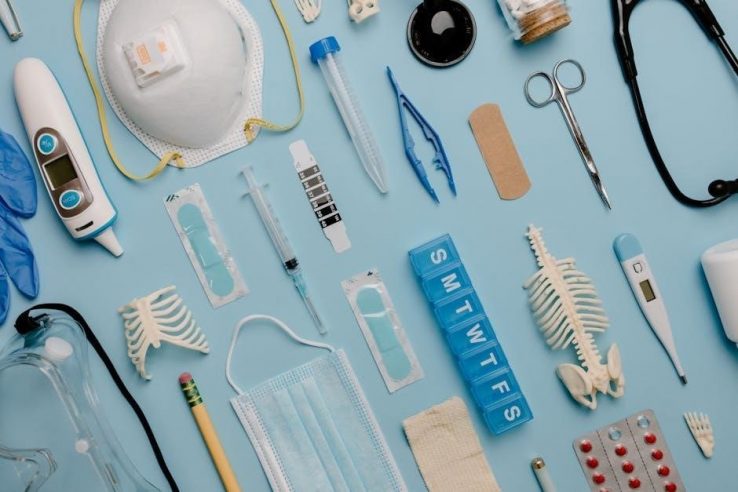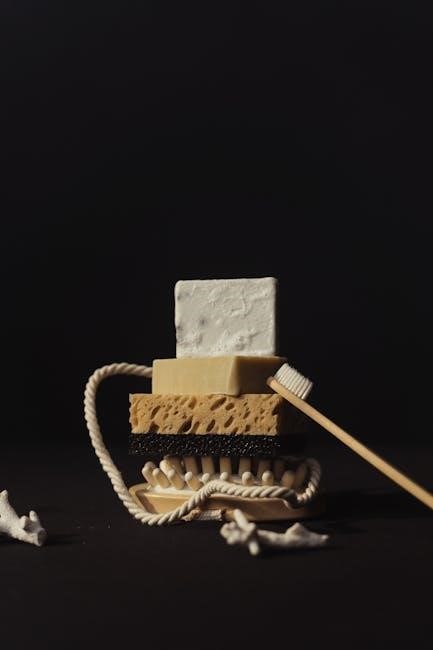Hana’s Suitcase: A Comprehensive Overview
Hana’s Suitcase, a poignant narrative, is available as a free PDF download online, detailing the story of a suitcase and a young girl’s fate․
The book, based on a CBC radio documentary, explores the journey of uncovering Hana Brady’s life and the impact of the Holocaust․
Numerous platforms offer access to the complete novel in digital format, ensuring widespread availability for educational purposes and remembrance․
The Discovery of the Suitcase
Hana’s Suitcase began its remarkable journey in 2000 when it unexpectedly arrived at the Tokyo Holocaust Education Resource Center․ This seemingly ordinary suitcase, bearing the name “Hana Brady” and her birthdate, May 16, 1931, immediately sparked curiosity․
The Center’s curator, Fumiko Ishioka, was deeply moved and initiated an investigation to uncover the story behind this poignant artifact․ The initial discovery prompted a quest to locate information about Hana, fueled by a desire to understand her life before the tragedy․
The availability of the book as a PDF further amplifies the story’s reach, allowing wider access to this compelling narrative of remembrance and resilience․
The Tokyo Holocaust Education Resource Center
The Tokyo Holocaust Education Resource Center serves as a vital hub for remembrance and education in Japan․ It was to this center that Hana’s Suitcase was delivered in 2000, initiating the profound investigation into her life․
The Center, dedicated to preserving the memory of the Holocaust, played a crucial role in tracing Hana Brady’s story, ultimately leading to the publication of the impactful book․ Access to the book in PDF format expands the Center’s educational outreach․
Its commitment to fostering understanding and tolerance makes it a key institution in promoting Holocaust awareness globally․
Fumiko Ishioka and Her Investigation
Fumiko Ishioka, curator of the Tokyo Holocaust Education Resource Center, spearheaded the compelling investigation triggered by the arrival of Hana’s Suitcase․ Driven by a desire to understand the child behind the name, she embarked on a meticulous journey to uncover Hana Brady’s history․
Her dedication led to the creation of the acclaimed book, now widely available as a PDF download, ensuring Hana’s story reaches a broader audience․ Ishioka’s work exemplifies the power of individual commitment to Holocaust remembrance․
Her research brought solace and closure to Hana’s surviving brother․
Hana Brady’s Life Before the Holocaust
Hana’s joyful existence in Nove Mesto na Morave, detailed in the book and accessible as a PDF, was tragically disrupted by the Nazi invasion․
Hana’s Early Childhood in Nove Mesto na Morave
Before the horrors of the Holocaust, Hana Brady experienced a peaceful childhood in the quaint Czech town of Nove Mesto na Morave, a life vividly portrayed within the pages of Hana’s Suitcase․
The book, often found as a PDF download, illustrates a vibrant community where Hana thrived with her family, enjoying simple joys before the shadow of Nazi occupation fell upon their world․
This idyllic period, documented through research detailed in the narrative, forms a stark contrast to the subsequent events, emphasizing the profound loss experienced by Hana and countless others․
The Brady Family: Marketa, Hana, and George
Hana’s Suitcase, readily available as a PDF download, beautifully depicts the close-knit Brady family – Marketa, Hana, and George – before their lives were irrevocably altered by the Holocaust․
The book details their loving dynamic in Nove Mesto na Morave, showcasing a typical family life tragically disrupted by escalating persecution and eventual deportation․
Understanding their relationships, as revealed in the narrative, is crucial to grasping the immense personal cost of the Holocaust and the enduring power of familial bonds․
Life in Czechoslovakia Before the Nazi Occupation
Before the horrors unfolded, Hana’s Suitcase, accessible as a PDF, paints a vivid picture of life in Czechoslovakia, a period of relative peace and normalcy for the Brady family․
The book illustrates a thriving Jewish community in Nove Mesto na Morave, where Hana enjoyed a happy childhood filled with family, friends, and everyday joys․
This idyllic existence, detailed within the narrative, serves as a stark contrast to the subsequent devastation, emphasizing the profound loss inflicted by the Nazi occupation․
The Impact of the Holocaust on the Brady Family
Hana’s Suitcase, found as a PDF, details the Brady family’s tragic fate, showcasing the devastating impact of the Holocaust on their lives and separation․
Deportation to Terezin
Hana’s Suitcase, accessible as a PDF, reveals the Brady family’s harrowing deportation to Terezin․ The book details their forced removal from Nove Mesto na Morave, Czechoslovakia, a pivotal moment marking a descent into unimaginable hardship․
Terezin, a concentration camp disguised as a town, became a temporary holding place before further atrocities․ The PDF version of the story emphasizes the family’s initial shock and the beginning of their suffering within the camp’s confines, highlighting the loss of freedom and dignity․
The narrative underscores the systematic dehumanization experienced by Hana, her mother, and brother during this period․
Conditions in the Terezin Concentration Camp
The Hana’s Suitcase PDF vividly portrays the appalling conditions within Terezin․ Overcrowding, starvation, and rampant disease were commonplace, creating a bleak existence for its inhabitants, as detailed in the book․
Despite its deceptive facade, Terezin was a place of immense suffering, lacking basic necessities․ The narrative, available for download, emphasizes the psychological toll of constant fear and uncertainty experienced by Hana and her family․
The story highlights the resilience of the prisoners amidst such brutality, and the struggle to maintain hope․
Separation and Transfer to Auschwitz
The Hana’s Suitcase PDF details the heartbreaking separation of the Brady family, a common tragedy within the Holocaust․ The book recounts the devastating transfer of Hana and her mother to Auschwitz, a fate documented through historical records․
This transfer signified a descent into unimaginable horror, as Auschwitz represented the ultimate symbol of Nazi brutality․ The narrative, accessible for download, emphasizes the emotional anguish of this forced separation․
It underscores the loss of innocence and the systematic dehumanization inflicted upon the victims․
The Journey to Uncover Hana’s Story
Hana’s Suitcase, available as a PDF, chronicles Fumiko Ishioka’s dedicated research, tracing Hana’s family history and bringing her story to light․
Fumiko Ishioka, curator of the Tokyo Holocaust Education Resource Center, initiated a meticulous investigation upon receiving Hana’s suitcase in 2000․
Driven by a desire to understand the story behind the name, she embarked on a quest, utilizing available resources, including the book itself and online archives․
The PDF version of Hana’s Suitcase details her process, revealing how she traced Hana’s family, connecting with survivors and historical records to piece together a tragic past․
Her dedication transformed a simple artifact into a powerful testament to remembrance and the importance of confronting the horrors of the Holocaust․

Tracing Hana’s Family History
Fumiko Ishioka’s research, detailed within the Hana’s Suitcase book and accessible as a PDF, focused intensely on reconstructing Hana Brady’s lineage․
She meticulously searched historical records, including deportation lists and concentration camp documentation, to uncover details about Hana’s parents and brother, George․
The book highlights her efforts to locate surviving relatives, ultimately leading to a remarkable reunion with George Brady, a crucial element of Hana’s story․
This painstaking process transformed Hana from a name on a suitcase into a fully realized individual with a family and a lost life․
Connecting with Survivors and Historical Records
Fumiko Ishioka’s investigation, chronicled in the Hana’s Suitcase book – often found as a PDF online – heavily relied on connecting with Holocaust survivors;

She sought firsthand accounts to corroborate information gleaned from historical archives, including deportation manifests and Terezin records․
The book details her dedication to verifying details and building a comprehensive picture of Hana’s life before and during the Holocaust․
These connections provided invaluable context, enriching the narrative and ensuring the accuracy of Hana’s story․

The Significance of the Suitcase
The suitcase, central to the Hana’s Suitcase book (available as a PDF), embodies lost innocence and serves as a tangible link to a tragic past․
The Suitcase as a Symbol of Lost Childhood
Hana’s suitcase, meticulously detailed within the book – often found as a PDF for educational access – transcends its physical form, becoming a powerful emblem of a stolen childhood․
It represents not just Hana, but all children whose lives were tragically cut short during the Holocaust, their dreams and potential forever lost․
The contents, or lack thereof, speak volumes about the abrupt disruption of a normal life, highlighting the devastating impact of prejudice and persecution․
Its journey to Tokyo, chronicled in the book, amplifies its symbolic weight, prompting reflection on remembrance and the importance of safeguarding innocence․
The Suitcase’s Journey from Terezin to Tokyo
The remarkable trajectory of Hana’s suitcase, central to the narrative detailed in the widely available book – often accessed as a PDF – is a testament to fate and dedicated investigation․
Originating in the Terezin concentration camp, a place of immense suffering, it somehow survived the horrors of the Holocaust, a silent witness to unimaginable tragedy․
Years later, it unexpectedly arrived at the Tokyo Holocaust Education Resource Center, sparking Fumiko Ishioka’s determined quest to uncover Hana’s story․
This improbable journey transformed a simple object into a conduit for remembrance and a catalyst for education, as documented within the book’s pages․
The Emotional Impact of the Suitcase on Fumiko and Students
The arrival of Hana’s suitcase profoundly impacted Fumiko Ishioka, the curator at the Tokyo Holocaust Education Resource Center, as vividly portrayed in the compelling book, often found as a PDF․
Driven by empathy, she embarked on a deeply personal investigation, connecting with Hana’s story on an emotional level, fueling her dedication to uncover the truth․
Similarly, students exposed to the suitcase and Hana’s narrative experienced a powerful emotional response, fostering a deeper understanding of the Holocaust’s human cost․
The book highlights how the object served as a tangible link to the past, inspiring reflection and a commitment to preventing future atrocities․

Hana’s Suitcase: The Book and Its Reception
Hana’s Suitcase received critical acclaim, earning awards and widespread use in schools; the book, often available as a PDF, powerfully resonates with readers․
Publication Details and Authorship
Hana’s Suitcase originated from a Canadian Broadcasting Corporation (CBC) radio documentary produced by Maryanne Levine, forming the foundation for the published book․ Karen Levine then authored the narrative, expanding upon the initial radio broadcast․
The book was initially published in 2002, and has seen subsequent editions․ While a physical copy is widely available, a PDF version circulates online, though its legality varies․
The Tokyo Holocaust Education Resource Center played a crucial role, inspiring the investigation and providing essential context for the story․ The authors aimed to honor Hana Brady’s memory․
Critical Acclaim and Awards
Hana’s Suitcase has garnered significant praise for its powerful and moving portrayal of the Holocaust through a child’s perspective․ Reviewers, like Dianne Dempsey of The Age, have lauded it as an “extraordinarily powerful book․”
The narrative’s emotional resonance and educational value have made it a staple in school curricula․ While a PDF version exists, the book’s impact stems from its carefully crafted storytelling․
Its ability to connect readers with Hana Brady’s story and the broader tragedy of the Holocaust has cemented its place as a significant work of remembrance․
Educational Use of the Book in Schools
Hana’s Suitcase is widely utilized in classrooms, particularly at the Grade 4-7 level, to introduce students to the Holocaust in an accessible and impactful manner․ The narrative fosters empathy and critical thinking about prejudice․
Though a PDF version is available for convenient access, educators often prefer the physical book to facilitate classroom discussions and activities․
Its compelling story encourages students to explore themes of remembrance, tolerance, and the importance of understanding history, promoting a deeper connection to the past․

Themes Explored in Hana’s Suitcase
Hana’s Suitcase, often accessed as a PDF, powerfully explores remembrance, prejudice, and resilience, prompting reflection on the Holocaust’s devastating impact․
The book emphasizes the importance of understanding history and combating discrimination․
The Importance of Remembrance
Hana’s Suitcase, readily available as a PDF, serves as a crucial tool for Holocaust remembrance, ensuring future generations understand the horrors of the past․
The book’s accessibility, through digital formats, amplifies its message, fostering empathy and preventing historical amnesia․
By sharing Hana Brady’s story, the narrative compels us to confront prejudice and actively promote tolerance, honoring the victims and safeguarding against recurrence․
The suitcase itself embodies memory, prompting ongoing dialogue and education about the Holocaust’s devastating consequences․
The Dangers of Prejudice and Discrimination
Hana’s Suitcase, accessible as a PDF, powerfully illustrates the devastating consequences of unchecked prejudice and systemic discrimination․

The book details how easily societal biases can escalate, leading to persecution, displacement, and ultimately, genocide, as experienced by Hana Brady and her family․
Through Hana’s story, the narrative serves as a stark warning against intolerance, urging readers to challenge discriminatory attitudes and behaviors;
The readily available PDF format ensures this vital lesson reaches a broad audience, promoting empathy and understanding․
The Resilience of the Human Spirit
Even as a PDF, Hana’s Suitcase profoundly demonstrates the enduring strength of the human spirit amidst unimaginable hardship․
Despite facing persecution and loss, Hana Brady’s story, as revealed in the book, embodies courage, hope, and the preservation of dignity․
The narrative highlights the importance of remembering individuals like Hana, whose lives were tragically cut short, yet whose memory inspires resilience․
Accessing the book as a download fosters a deeper connection to this powerful message of hope and perseverance․

Finding Hana’s Brother, George Brady
Hana’s Suitcase, available as a PDF, led to locating George Brady, Hana’s brother, a survivor who shared his family’s story and contributed to Holocaust education․
George Brady’s Post-War Life
Following liberation, George Brady rebuilt his life in Canada, becoming a respected figure known for his dedication to sharing his family’s harrowing experiences․ The discovery stemming from Hana’s Suitcase, accessible as a PDF, profoundly impacted him․
He actively participated in Holocaust education, speaking to students and communities about the importance of remembrance and tolerance․ Brady’s story, intertwined with the book’s narrative, became a powerful testament to resilience․
He embraced his role as a voice for those lost, ensuring Hana’s memory and the lessons of the Holocaust would endure for future generations, fueled by the suitcase’s journey․
The Reunion of George Brady and Fumiko Ishioka
The impact of Hana’s Suitcase, widely available as a PDF, culminated in a deeply moving reunion between George Brady and Fumiko Ishioka․ Ishioka’s relentless pursuit, detailed in the book, led to connecting with Brady, Hana’s brother․
Their meeting, a testament to the power of remembrance, symbolized the bridging of cultures and the enduring human spirit․ Brady expressed profound gratitude for Ishioka’s dedication to preserving Hana’s memory․
This encounter underscored the suitcase’s significance as a catalyst for healing and a powerful reminder of the Holocaust’s devastating consequences․

George Brady’s Contributions to Holocaust Education
Following the widespread reach of Hana’s Suitcase, often accessed as a PDF, George Brady dedicated his life to Holocaust education․ He became a sought-after speaker, sharing Hana’s story and his family’s experiences with audiences worldwide․
Brady’s personal testimony, amplified by the book’s impact, served as a vital tool in combating denial and promoting understanding․ He emphasized the importance of remembering the past to prevent future atrocities․
His commitment ensured Hana’s legacy lived on, inspiring generations to embrace tolerance and fight against prejudice․

Hana’s Suitcase: Available Formats and Downloads
Hana’s Suitcase is readily available as a digital PDF, alongside print editions and translations, ensuring broad accessibility to this impactful story․
PDF Availability and Legality
Hana’s Suitcase, as a significant educational resource, frequently appears as a PDF online, though its legality varies․ While some sources offer free downloads, these may infringe on copyright․
Legitimate access often requires purchasing the book through authorized retailers or utilizing library resources․ Caution is advised when downloading from unofficial websites to avoid potential legal issues and ensure the quality of the PDF file․
Respecting copyright supports the authors and ensures continued availability of this important Holocaust narrative․
Online Resources for Accessing the Book
Websites dedicated to Holocaust education and remembrance frequently list the book in their resource sections, providing links to purchase options․ Searching online booksellers is also recommended․
Remember to verify the legitimacy of any download source to ensure a safe and legal reading experience of this impactful story․
Print Editions and Translations
While a readily available, legal PDF version can be elusive, Hana’s Suitcase is widely accessible in print editions․ These are available through major booksellers and libraries globally, ensuring physical copies are obtainable․
Originally written and published in English, the book has seen translations into various languages, broadening its reach and impact․ This allows diverse audiences to connect with Hana’s story․
Checking with local libraries and international book retailers will reveal translation availability in specific regions, complementing the original English edition․
The Legacy of Hana Brady
Hana’s story, popularized by the book and accessible as a PDF, serves as a vital Holocaust reminder, promoting tolerance and understanding for future generations․
Hana’s Story as a Reminder of the Holocaust
Hana’s Suitcase, widely available as a PDF, powerfully illustrates the individual tragedy within the vast scope of the Holocaust, ensuring her story isn’t forgotten․
The book transforms a simple suitcase into a tangible link to a lost childhood, prompting reflection on the human cost of prejudice and discrimination․
Through Fumiko Ishioka’s dedicated research, documented in the narrative, Hana’s life becomes a crucial lesson, emphasizing the importance of remembrance and preventing future atrocities․
The accessibility of the PDF version further amplifies Hana’s legacy, allowing broader educational reach and fostering empathy among readers worldwide․
The Ongoing Work of the Tokyo Holocaust Education Resource Center
The Tokyo Holocaust Education Resource Center, central to Hana’s Suitcase story – accessible as a PDF – continues its vital mission of Holocaust education and remembrance․
Driven by the initial discovery of Hana’s suitcase, the center actively promotes understanding through exhibits, research, and educational programs, reaching diverse audiences․
The center’s work, inspired by Fumiko Ishioka’s dedication, ensures Hana’s story and the lessons of the Holocaust are preserved and shared with future generations․
Providing resources like the book in PDF format expands their reach, fostering global awareness and combating antisemitism and all forms of intolerance․
The Importance of Teaching Tolerance and Understanding
Hana’s Suitcase, readily available as a PDF, serves as a powerful tool for fostering tolerance and understanding amongst students and communities worldwide․
The book’s narrative, centered on Hana Brady’s life and tragic fate, encourages empathy and critical thinking about prejudice and discrimination․
By exploring the consequences of hatred, educators can utilize this resource to promote inclusivity and respect for diversity․
Access to the PDF version ensures broader accessibility, enabling impactful discussions and lessons on human rights and the importance of remembrance․
Further Research and Resources
Hana’s Suitcase PDF access links to related Holocaust resources, documentaries, and websites dedicated to Hana Brady’s story and legacy․
Explore online archives and educational materials for deeper insights into this impactful narrative․
Websites Dedicated to Hana Brady and the Holocaust
Several online platforms offer comprehensive information regarding Hana’s Suitcase and the broader context of the Holocaust․ The Tokyo Holocaust Education Resource Center (https://www․tokyohet․org/) remains central, detailing Fumiko Ishioka’s initial discovery and research․
Additional resources include websites dedicated to Holocaust remembrance, survivor testimonies, and historical documentation․ Many sites provide access to digitized versions of related materials, including articles inspired by the book and PDF resources for educators․ Explore these links to deepen your understanding of Hana Brady’s story and the importance of Holocaust education․
Documentaries and Films Related to the Story
The story of Hana’s Suitcase originated as a Canadian Broadcasting Corporation (CBC) radio documentary, serving as the foundational narrative for the acclaimed book․ While a direct film adaptation isn’t widely available, numerous documentaries explore similar themes of Holocaust remembrance and the impact on individuals․
Searching for documentaries focusing on Terezin or Jewish children during the Holocaust will yield relevant content․ Some educational platforms may offer streaming access or PDF transcripts related to the original CBC broadcast, enriching understanding of Hana Brady’s journey․


